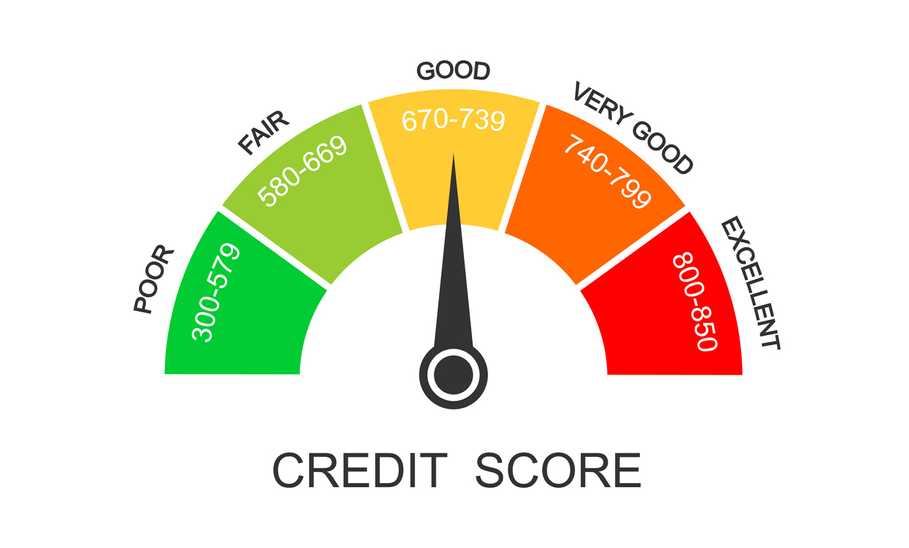Is a 680 Credit Score Good or Bad?


Our evaluations and opinions are not influenced by our advertising relationships, but we may earn a commission from our partners’ links. This content is created by TIME Stamped, under TIME’s direction and produced in accordance with TIME’s editorial guidelines and overseen by TIME’s editorial staff. Learn more about it.
Your credit score can have a significant impact on your life. It can be the difference between being approved for a mortgage to purchase a home and having to find alternatives such as renting or staying with a family member. This is why it’s important to know your credit score and understand where it falls on the scale.
A 680 credit score is generally considered by the two main credit scoring models to be within the “good” range. The scoring ranges for the two scoring models (FICO and VantageScore) are as follows.
| FICO | VantageScore | |
|---|---|---|
Very Poor | N/A | 300 to 499 |
Poor | 300 to 579 | 500 to 600 |
Fair | 580 to 669 | 601 to 660 |
Good | 670 to 739 | 661 to 780 |
Very Good | 740 to 799 | N/A |
Exceptional/Excellent | 800 to 850 | 781 to 850 |
When you have a 680 credit score, you will be more likely to be approved for a range of financial products, such as the following:
Generally, borrowers who have at least a 620 credit score can get approved for a conventional mortgage. The higher your score, the more likely you are to get a lower interest rate when you apply for a mortgage, though the exact rate will also depend on your debt-to-income ratio and income. With a 680 credit score you can also apply for a Veterans Affairs (VA) loan, Federal Housing Administration (FHA) loan, or United States Department of Agriculture (USDA) loan and will likely be approved if you meet the eligibility requirements and the lender’s criteria.
Getting a car loan with a 680 credit score should be fairly straightforward. Because 680 is considered a “good” score, lenders will likely offer you lower interest rates than they would offer someone with a lower score. As with a home loan, car loan lenders will also take into account your income and debt-to-income ratio when calculating your interest rate.
With a 680 credit score you should find it relatively easy to get a credit card. Although some cards may be reserved for borrowers with “excellent” scores, many lenders require a “good” score or higher for their best credit cards. Below are some examples of the best credit cards you can apply for with a 680 credit score.
| Card | Annual fees | Rewards rate | Intro offer |
|---|---|---|---|
card_name | annual_fees | 1.5% cash back on every purchase, every day. 5% cash back on hotels and rental cars booked through Capital One Travel (terms apply). | bonus_miles_full |
annual_fees | Earn 2% cash back on all eligible purchases on up to $50,000 per calendar year, then 1%. 1% cash back on all eligible purchases after spending $50,000 per calendar year. | intro_apr_rate,intro_apr_duration and balance_transfer_intro_apr,balance_transfer_intro_duration. After the intro period, reg_apr,reg_apr_type. | |
card_name | annual_fees (Rates & Fees) | Earn 4x points on dining worldwide on up to $50,000 in purchases per calendar year, 4x points on up to $25,000 spent each year at U.S. supermarkets (then 1x points), 3x points on airfare booked with airlines or through AmexTravel.com, and 1x points on other purchases. Terms apply. | bonus_miles_full |
You should be able to be approved for a student loan easily with a 680 credit score. Student loans are relatively easy to get, and with a score that falls within the “good” range, you should have your pick of lenders.
It’s likely you can find a lender who will approve you for a personal loan with a 680 credit score, though you might need to shop around more than someone with a higher credit score. A personal loan for a borrower with this score will probably come with a higher interest rate. Improving your credit score can help make it easier to get approved for personal loans.
Although a 680 credit score can open many doors for you, there are some things for which you may not be approved unless you raise your credit score. The following are some examples of financial products for which you may not get approval unless you increase your 680 credit score.
Although a 680 credit score is considered “good,” it’s near the low end of the range. A few missed payments or too many credit applications could push you down to the “fair” range and limit what you can get approved for. The following tips can help you improve your 680 credit score, so you have a little more leeway if you accidentally miss a payment.
Monitoring your credit has a couple of benefits. First, it can help you catch any issues quickly, so you can resolve them before they negatively affect your credit too much. Second, seeing your score increase by practicing smart financial practices can motivate you to keep going. There are several credit monitoring apps out there, such as Experian and MyFICO, that can help you hit that higher score.
Myfico | Experian | |
|---|---|---|
| Monthly fee | Free to $39.95 per month | Free to $24.99 per month |
| Credit scoring model used | FICO | FICO |
| Identity insurance | Up to $1 million | N/A |
Budgeting can help you break bad habits and focus on getting your finances in order. However, a budget isn’t a magic tool; you actually have to stick to it in order for it to work. Figure out how much you need to pay each month in debt and budget at least the minimum payments for each of your credit cards. Tools like Quicken can help you build and maintain you budget so you can reach your financial goals.
The easiest way to have a positive impact on your credit score is to make sure you’re paying your bills on time. Late payments will usually result in a ding to your credit score, and if you routinely miss payments, the effect can be significant. Sign up for automatic bill pay where possible to help prevent accidental late payments. In addition, keep tabs on any bills that don’t allow automatic bill pay to ensure that you remember to pay them on time.
The two scoring models consider the breadth of your credit file when calculating your score. If your file is too thin (meaning you don’t have many credit cards or loans on your record), your score will likely be lower. To thicken your file, consider applying for a new credit card or taking out a loan that you can easily repay. Just make sure you don’t apply for too many loans or credit cards at once, or your score may decrease instead of increase.
A borrower with high balances on their credit cards can seem risky for a lender. Ideally, you’ll use no more than 30% of your available credit limit. If your credit card balances are over that utilization rate, make a plan to pay them down (pay them off entirely, if possible). Once you decrease your credit utilization, you should see your credit score increase.
Although it’s wise to have a few different credit cards and loans to your name in order to build a robust credit file, it’s inadvisable to apply for new accounts too often or make multiple applications too close to each other. Every time you apply for an unsecured credit card or a loan, the lender will run a hard credit check to determine whether or not to approve your application. A hard credit pull can decrease your score by a few points, though the effect won’t be noticeable if you only apply for new credit occasionally. However, if you apply for multiple cards or loans in a short space of time, your score will suffer and lenders will see you as more risky.
While a 680 credit score is considered “good,” it falls at the lower end of the range. Just a few missed payments could drop your score into the “fair” or “poor” range, and you would have trouble qualifying for loans and credit cards. By building your credit score, you can push it up toward the top of the “good” range or even into the “excellent” range.
For rates and fees of the card_name, please visit this URL.
A 760 credit score is considered “very good” by FICO and “good” by VantageScore.
A 600 credit score falls in the “fair” category for FICO and in the “poor” category for VantageScore, though improving your score by just one point, to 601, pushes you into VantageScore’s “fair” range.
FICO considers a 740 credit score to be “very good,” while VantageScore considers it to be “good.”
The information presented here is created by TIME Stamped and overseen by TIME editorial staff. To learn more, see our About Us page.



